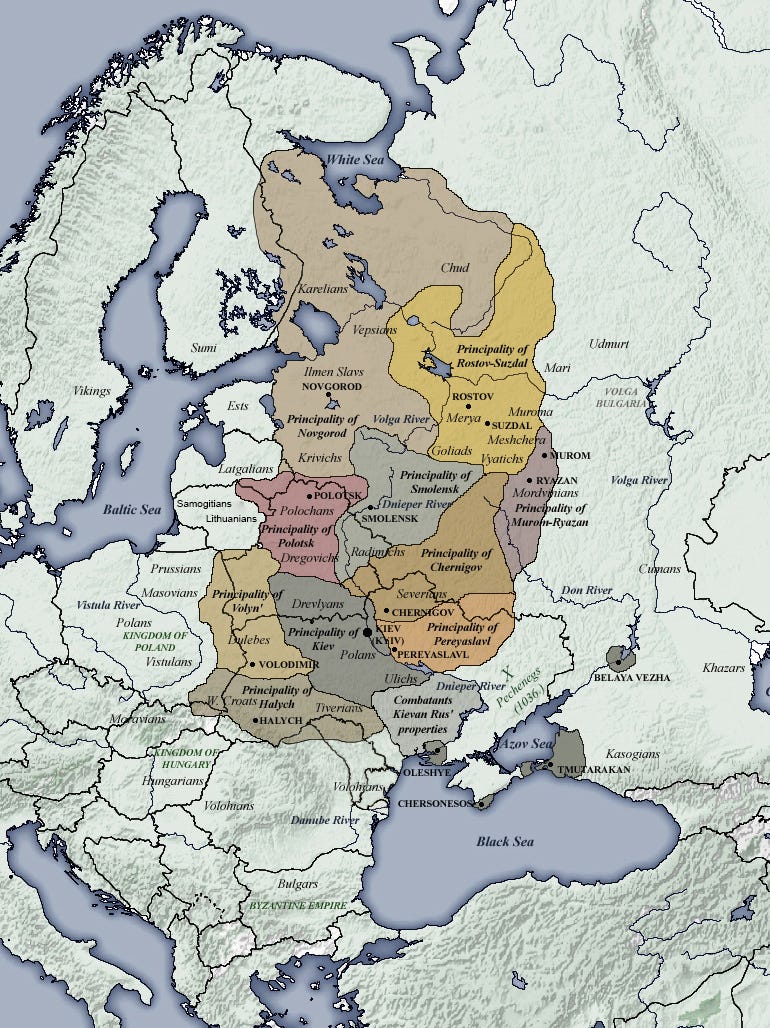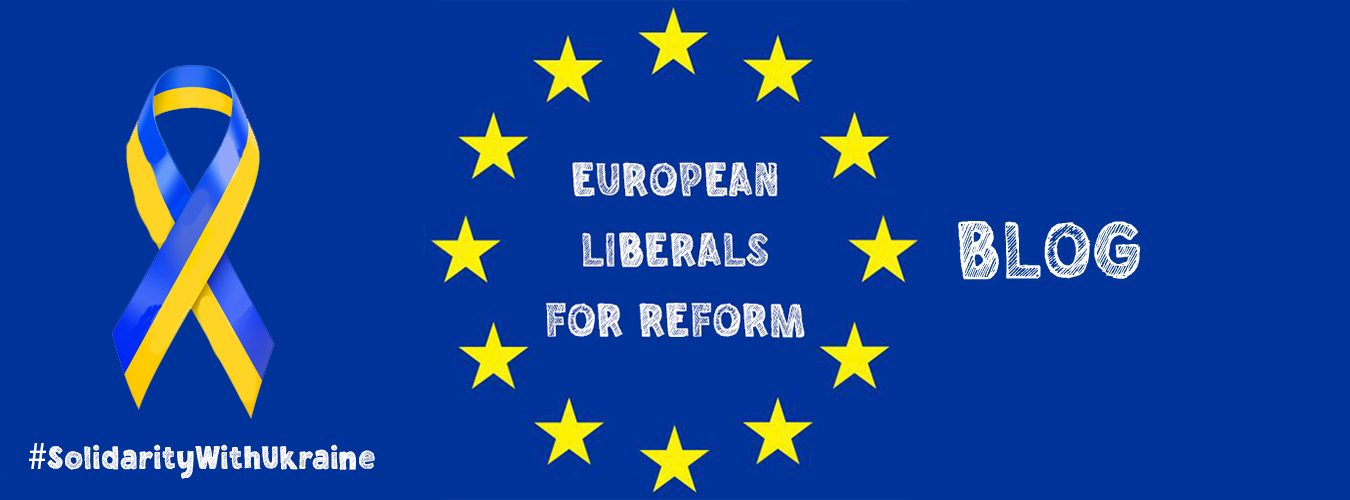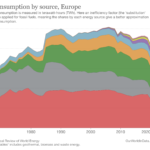Johannes Eber – Good morning Europe blog
There is so much writing about Ukraine these days. For good reasons. The threats from Putin’s Russia could lead to war.
I asked myself what I could add to help understand that conflict. Thinking about it, I realised that I know very little about the basics and Ukraine’s history. Maybe you feel the same.
So I’ve put together some facts I hadn’t known before delving into preparing for writing this post. Even if the following points have nothing to do directly with the current situation, they might be a bit enlightening. Because as always: knowing the past helps to understand the present.

The most powerful state – a thousand years ago
In the Middle Ages, more precisely during the 10th and 11th centuries, the Kievan Rus’ was the largest and most powerful state in Europe (see map above). This empire – the time is called today “Golden Age of Kyiv” – included the central, western and northern part of modern Ukraine, Belarus, the far eastern strip of Poland and the western part of present-day Russia.
This empire laid the foundation of the national identity of both Ukrainians and Russians. The modern nations of Belarus, Russia, and Ukraine all claim Kievan Rus’ as their cultural ancestors, with Belarus and Russia deriving their names from it.
A suffering country
In the 19th century, today’s Ukraine was part of the Russian Empire but entered World War I on the side of both the Central Powers, under Austria, and the Triple Entente, under Russia. Three-and-a-half million Ukrainians fought with the Imperial Russian Army, while 250,000 fought for the Austro-Hungarian Army.
Since World War I destroyed both empires, a Ukrainian national movement for self-determination emerged. The internationally recognised Ukrainian People’s Republic was declared on 23 June 1917. But it didn’t last long. While the Soviet power was established, Ukraine lost half of its territory – in part to Moldova, which established autonomy on the left bank of the Dniester River, in part to the Second Polish Republic. In December 1922, Ukraine became a founding member of the Union of Soviet Socialist Republics.
In the early 1930s, under the communist party leader Joseph Stalin, Ukraine was involved in Soviet industrialisation, which meant it was part of the first five-year plan enforced by regular troops and secret police. Those who resisted were arrested and deported. During that time, agricultural productivity significantly declined.
In World War II, Ukraine was the main theatre of war. The vast majority of the fighting in World War II took place on the so-called Eastern Front. By some estimates, 93 per cent of all German casualties happened there. The total losses inflicted upon the Ukrainian population during the war are estimated at 6 million, including an estimated one and a half million Jews killed by the so-called German ‘Einsatzgruppen’, the paramilitary death squads of Nazi Germany.
After World War II, the whole country became part of the Soviet Union. After Stalin died in 1953, Nikita Khrushchev, the new leader of the USSR, began to emphasise “the friendship” between the Ukrainian and Russian nations. Krushchev was familiar with the country since he had served as First Secretary of the Communist Party of Ukraine in 1938–49. In 1954 he transferred Crimea from the Russian part of the Soviet Union to the Ukrainian territory.
Largest European country
As of today, the country is the largest entirely within Europe. It is 1.7 bigger than Germany.
Its bordering states are Belarus to the north; Poland, Slovakia, and Hungary to the west; Romania and Moldova to the south.
As large as it is, as poor it is. With an estimated population of 41.4 million, it is the poorest country in Europe alongside Moldova, suffering from a high poverty rate as well as severe corruption. It ranks 126th out of 180 countries on the Corruption Perceptions Index of Transparency International.
Breadbasket of Europe
Because of its extensive fertile farmlands, Ukraine is sometimes called the “Breadbasket of Europe”. It is one of the largest grain exporters in the world, and it is the world’s leading producer of sunflower oil and seed production.
But the economy in general and particular infrastructure are still unsatisfactory. For example, logistical issues relating to the country’s railways continue to hamper seamless delivery from field to fork.
Wages in Ukraine are still low. Average monthly salaries are (converted) about 450 Euro (the currency there is called “Ukrainian hryvnia”).
Although Ukraine produces and processes its own natural gas and petroleum, it imports most of its energy supplies: 80 per cent of Ukraine’s natural gas supplies are imported, mainly from Russia.
Ukraine’s military power
Although Ukraine would likely be defeated in a military confrontation with Russia, it has extensive military capabilities. The country maintains the third-largest military in Europe after Russia and France.
The country has around 255,000 active military personnel and another 900,000 reservists (Russia: 1 million active military personnel and another 2 million reservists) and spends 3.4 per cent of its GDP on defence – much more than other European countries. (Dan Peleschuk, editor at the American think tank Atlantic Council, deepens the topic of Ukraine’s and Russia’s military strength here.)
The present
What does the past tell us about the present? Links in the region in general and between Russia and Ukraine, in particular, are strong. Sometimes they were voluntary, often forced. It takes little wisdom to say, that both states will only have a good future if both states become solid democracies. Notably, Russia has a long way to go.
Author Profile

-
Founder of the "Good morning Europe blog" and Pixel economist
Guest author for European Liberals for Reform
Johannes' articles are originally written for the “Good morning Europe” blog (www.goodmorningeurope.org) and the Pixel economist (https://thepixeleconomist.substack.com).
We were given permission to publish his articles on the European Liberals for Reform blog.
Latest entries
Post Disclaimer
The opinions expressed by the author of this post do not necessarily represent the opinions and policies of ELfR.




